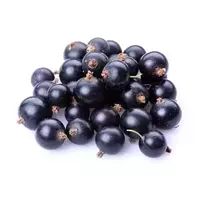Jostaberry

The berry under the mysterious name yoshta is the result of many years of painstaking work by more than one generation of breeders to cross gooseberries and blackcurrants. In fact, this berry is a hybrid of three plants: common gooseberry, melted gooseberry and blackcurrant. The yoshta plant was bred in Germany in 1970 thanks to the special efforts of breeder Rudolf Bauer. Today, yoshta is especially common in Western Europe.
Scientists did not make efforts to breed a new berry in vain: they sought to improve blackcurrants by certain parameters, in particular, not only increase the yield and size of berries, but also instill resistance to terry and kidney mites in the plant. At the same time, it was desirable to get rid of gooseberry spines when crossing.
Meanwhile, the yoshta plant is a perennial berry shrub with powerful spreading bushes that grow quite quickly, while forming one and a half meters of shoots. A distinctive property of yoshta from gooseberries is that the plant lacks spines.
Of particular interest to humans are yoshta berries, which are painted black with a purple tint and collected in brushes of three to five pieces. Yoshta berries are characterized by a dense skin, but in size and shape they resemble cherries. The taste of mature fruits is sour-sweet, with a delicate nutmeg taste. With an average fruit mass of about three grams, individual specimens sometimes reach five grams. Even when fully ripened, yoshta berries, unlike the same blackcurrant, do not crumble.
It is customary to use fruits not only fresh, but also to use them for processing. By the way, yoshta berries, numerous recipes for which provide for the processing of raw materials, are perfectly harvested for storage - jams, compotes, jelly. In addition, mature fruits are often frozen and dried.
Jam from yoshta berries is especially tasty. But the most important thing when making this treat is properly picked berries. As a rule, yoshta for jam is collected when the berries have not matured a little yet - thanks to this, they are quite dense and do not boil during processing.
As you know, yoshta berries contain about seven percent of sugars, and although they are inferior to blackcurrant in terms of ascorbic acid content, they are superior to gooseberries. The presence of valuable substances is due to the useful properties of yoshta, the use of which contributes to the improvement of blood circulation, the elimination of salts of heavy metals and radioactive substances from the human body, as well as the prevention of gastrointestinal diseases.
yoshty 45 kCal
Energy value of yoshta (Ratio of proteins, fats, carbohydrates - ju):
Proteins: 0.7 g (~ 3 kCal)
Fats: 0.2 g (~ 2 kCal)
Carbohydrates: 9.1 g (~ 36 kCal)
Energy ratio (bj | y): 6% | 4% | 81%
 Español
Español Français
Français Português
Português Русский
Русский 简体中文
简体中文 繁體中文
繁體中文 日本語
日本語 한국어
한국어 العربية
العربية Türkçe
Türkçe Қазақ
Қазақ Deutsch
Deutsch Italiano
Italiano Українська
Українська
